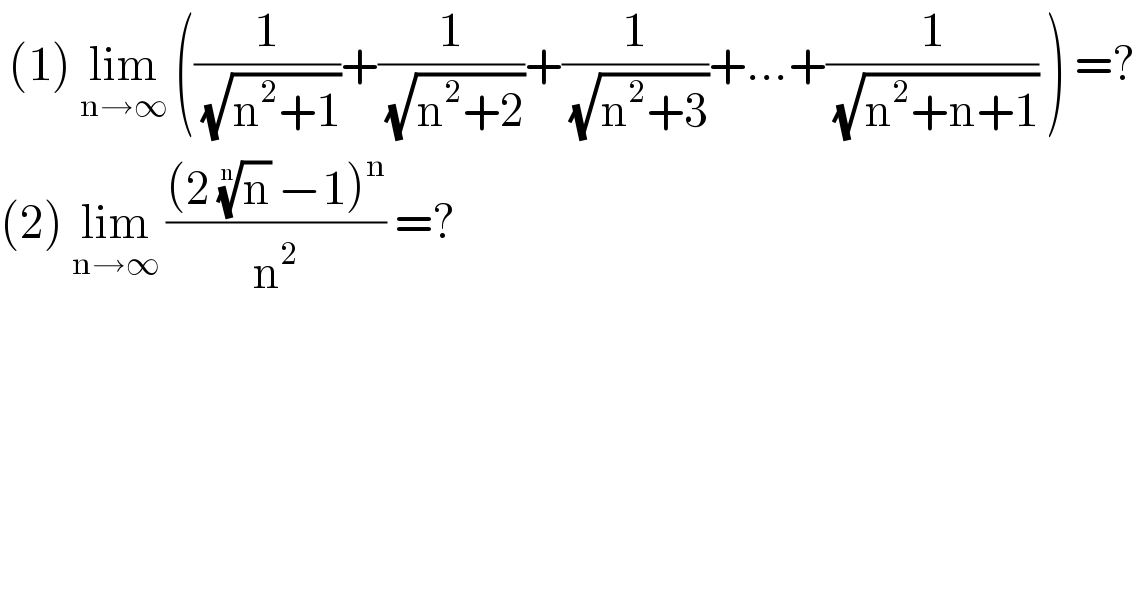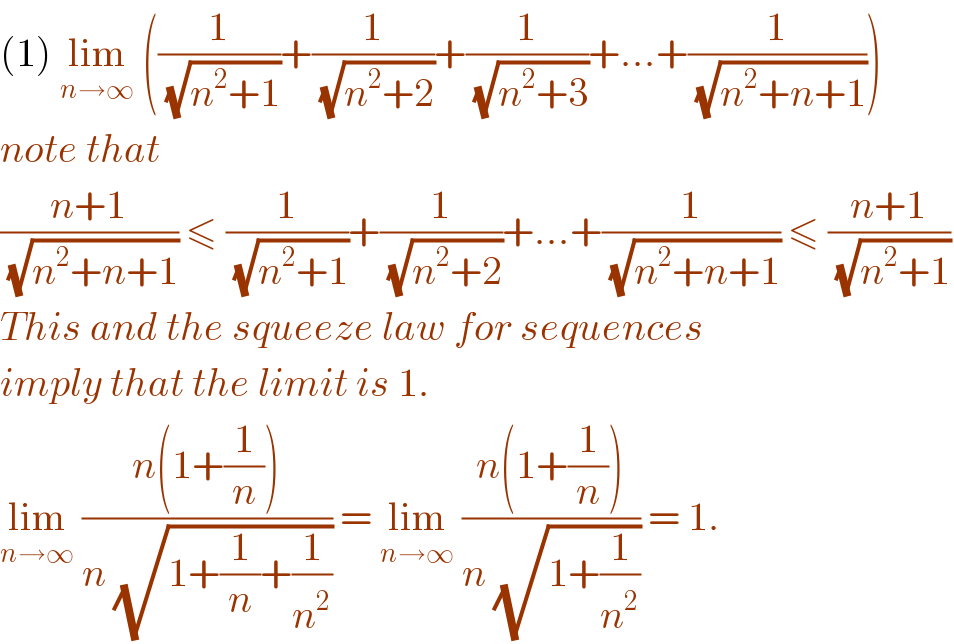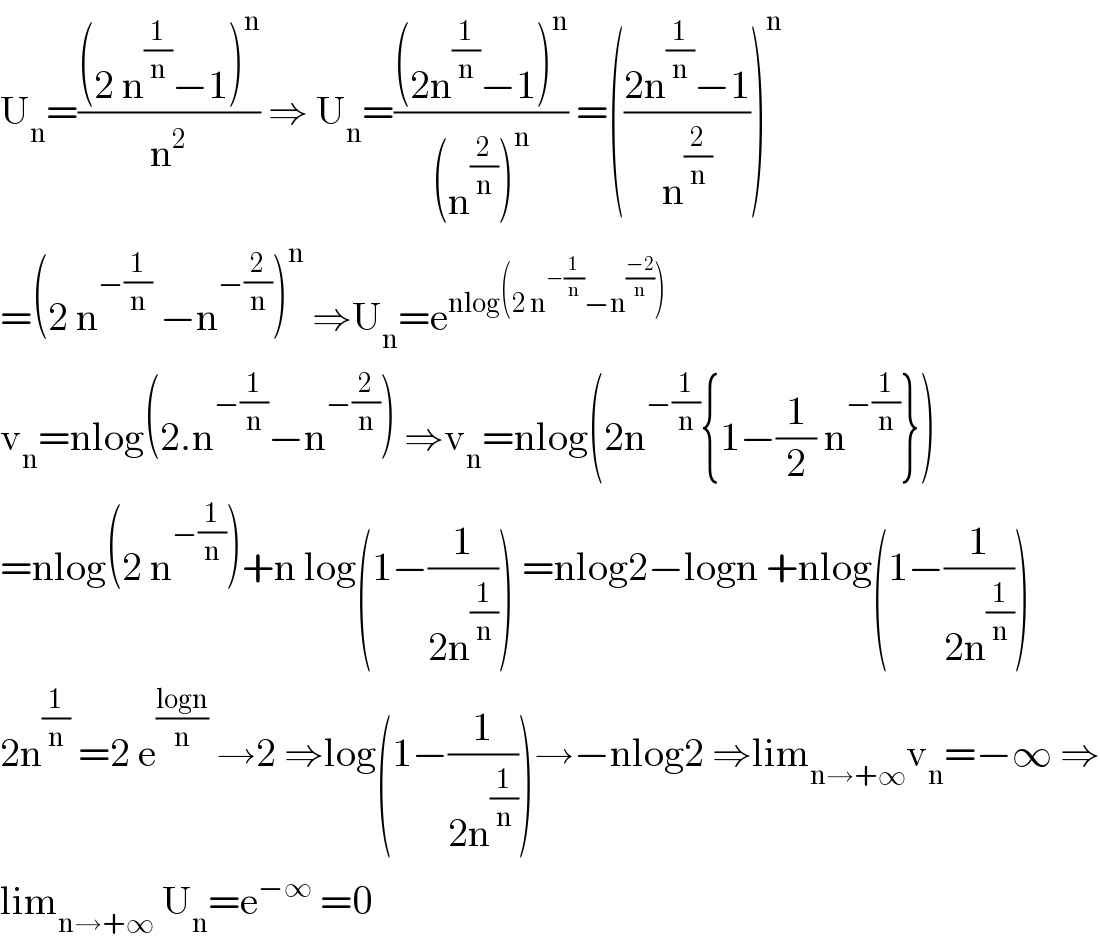
Question and Answers Forum
Question Number 122152 by liberty last updated on 14/Nov/20

Answered by benjo_mathlover last updated on 14/Nov/20

Commented by liberty last updated on 14/Nov/20

Answered by mathmax by abdo last updated on 14/Nov/20

| ||
Question and Answers Forum | ||
Question Number 122152 by liberty last updated on 14/Nov/20 | ||
 | ||
Answered by benjo_mathlover last updated on 14/Nov/20 | ||
 | ||
| ||
Commented by liberty last updated on 14/Nov/20 | ||
 | ||
Answered by mathmax by abdo last updated on 14/Nov/20 | ||
 | ||
| ||